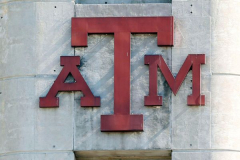BUSAN, South Korea (AP) — Three-digit tariffs are off the table, but import duties on each other are higher than in January.
Rare earth materials will flow more smoothly, but China has put in place an export permitting regime that it can tighten or loosen as needed.
Port fees will go away, but only for one year.
And Beijing is again buying U.S. soybeans after it had abruptly cut off American farmers.
After months of posturing, arguing and threatening, U.S. President Donald Trump and Chinese leader Xi Jinping have essentially turned back the clock. While the meeting between the two leaders was hailed by Trump as a “roaring success,” the agreement that came out of it may only serve to undo some of the damages Trump inflicted with his trade war upon his return to the White House.
“It is hard to see what major gains the U.S. has made in the bilateral relationship relative to where things stood before Trump took office,” said Eswar Prasad, an economist at Cornell University.
On the Senate floor, Minority Leader Chuck Schumer on Thursday denounced the deal out of South Korea as leaving the U.S. as “no better off.”
“If anything, things are worse: Prices have gone up and China has agreed to nothing of substance that will improve trade between our nations,” the Democrat senator said, adding that Trump “started a trade war, created a giant mess for businesses, consumers, and soybean farmers, and then he celebrates for trying to clean up the very mess he created in the first place.”
Stay up to date with the news and the best of AP by following our WhatsApp channel.
Follow on

Nevertheless, the deal has injected a degree of stability, giving the world’s two largest economies — as well as the rest of the world — time and room to readjust.
Washington and Beijing still need to finalize their agreements, a process that always has the potential for fresh disputes. But for now, Xi appears interested in moving past the latest tensions.
In an official statement, Xi referred to “recent twists and turns” that “offered some lessons for both sides.” He said they should be “focusing on the benefits of cooperation rather than falling into a vicious cycle of mutual retaliation.”
Both sides reduce tariffs, resume soybean sales to China
Trump fired the first shot in the trade war in February when he imposed an additional 10% tariff on Chinese goods over the allegation that Beijing failed to stem the flow of chemicals used to make fentanyl. That soared to as much as 145% after China retaliated, but Trump walked it back following market meltdowns.
The two sides in May slashed their massive tariffs to 10% on each other, while Washington retained the 20% fentanyl-related tariff, and China its retaliatory tariffs of 10% or 15% on U.S. farm goods.
Now, Trump said he has removed one 10% fentanyl tariff in exchange for Beijing’s cooperation in fighting the illicit drug.
U.S. Secretary of Agriculture Brooke Rollins said China would also withdraw the retaliatory tariffs on U.S. agricultural products. A spokesperson for the Chinese Mi





